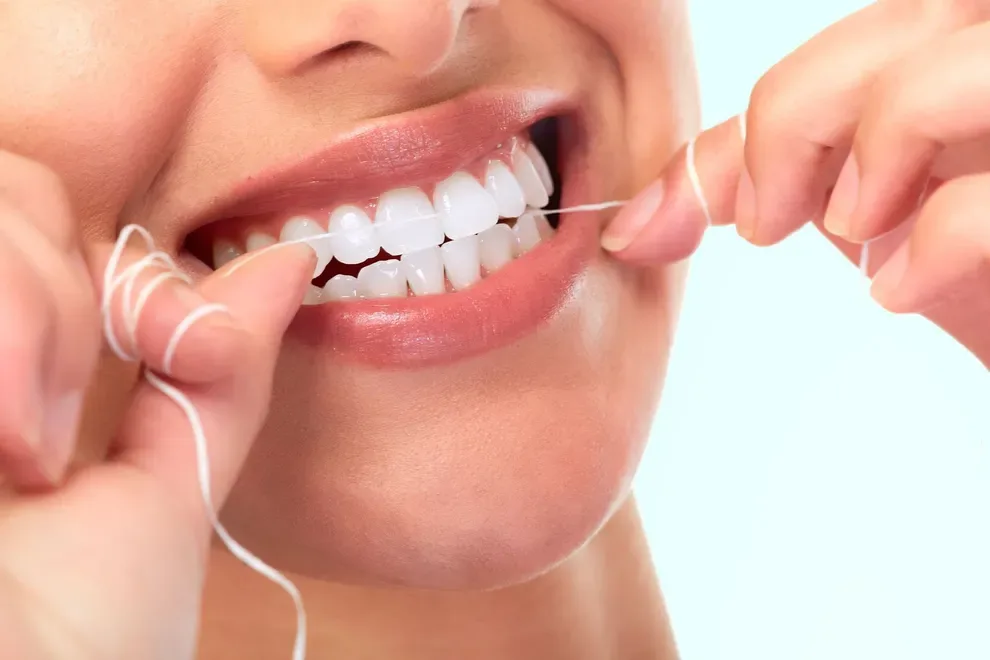How Often Should You Floss? What Dentists Recommend

Table of Contents
- How Often Should You Floss
- Proper Flossing Techniques
- What Happens if You Don't Floss
- References
Flossing your teeth removes plaque and bacteria from between your teeth. Doing this at least once per day significantly benefits your oral health, reducing your risk of tartar and cavities.
Many dentists recommend flossing at least twice per day, alongside brushing your teeth. If you brush three times a day, after each meal, add flossing to remove more food particles.
How Often Should You Floss?
Flossing or using interdental brushes are important parts of your oral healthcare routine. They clean the spaces between your teeth to reduce the buildup of food particles and plaque. Flossing is considered one of the two most important parts of a good dental hygiene routine, which also includes brushing your teeth.
The American Dental Association (ADA) recommends brushing your teeth twice per day, but how often should you floss? Surprisingly, dentists recommend at least once per day rather than twice. However, you may find it easier to floss whenever you brush your teeth, so you then perform this important oral healthcare routine regularly. You may also use floss on an as-needed basis if you get a piece of food stuck in your teeth and need to get it out.
When plaque is not removed from brushing and flossing it can become calculus or tartar within 26 hours.
Proper Flossing Technique Improves Your Oral Health
Together, brushing and flossing your teeth are the best ways to remove most plaque and bacteria, which can lead to tartar, tooth decay, and gum disease. Flossing the correct way is important, as it can reduce the risk of hurting your gums while ensuring that you remove as much plaque from between your teeth as possible.
The ideal flossing technique can take practice. Follow these steps:
Break off a piece of floss that is several inches in length.
Wrap the floss around the middle fingers of both your hands, so there is a length of floss between your hands.
Grip the floss with your index fingers and thumbs so you can maneuver the strand effectively.
Gently move the floss up and down in the space between your teeth until you reach the gum line.
Curve the floss so it slips under the gum next to one tooth.
Clean the adjoining gum the same way.
Be sure to move the floss up and down against the sides of the teeth.
Slide the floss out and unwind another section in the middle as needed as the floss wears out.
If you struggle with flossing for any reason, you can try interdental brushes, which some dentists suggest are more effective than dental floss at cleaning between the teeth. Some people benefit from water flossers instead of interdental brushes or dental floss. Your dentist can help you find alternatives if you struggle with flossing.
What Happens if You Do Not Floss Your Teeth
Although the ADA recommends flossing at least once per day, few American adults floss often enough. One study found that about 36 percent of adults reported flossing every day, while 36.6 percent reported that they floss between one and six days per week; 31.9 percent reported not flossing their teeth at all.
You do not need to floss to clean your teeth, but flossing greatly improves your oral health. Some statistics show that people who floss are 80 percent less likely to develop gum disease and tooth decay. This is because cleaning between your teeth greatly reduces the amount of plaque and bacteria that can lead to infection.
Flossing and brushing together mean you are less likely to need fillings, deep cleanings, or more frequent dentist visits. Remember that flossing properly is almost as important as flossing at all. Without the right technique, you might not get the best results.
